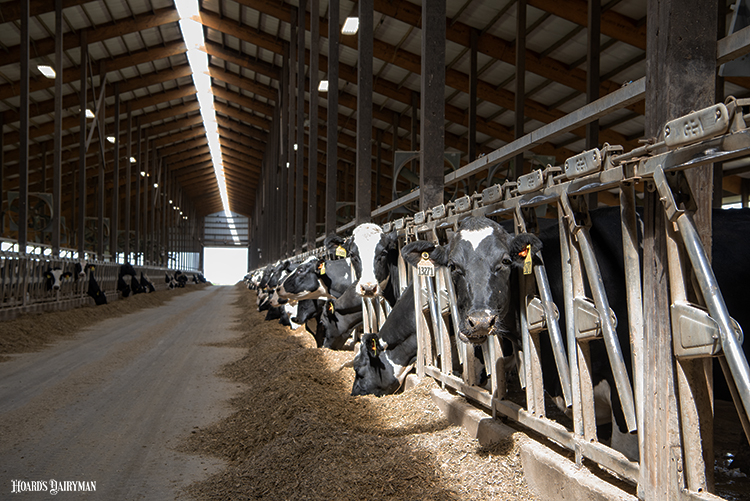
Scott Brenner of Hunter Haven Farm in Illinois said that focusing on the quality of their corn silage and alfalfa allows them to reduce costs because they need to purchase less supplemental grain. Instead, they chose to invest in their own harvesting equipment, which Brenner called the best decision the farm ever made. That gives them the flexibility they need to ensure their 2,200 acres of crops are harvested at the ideal time.
Pico Dairy Group in Colorado doesn’t have that same control from seed to harvest because they buy all of their crops standing, but Shawn Kemp described that they work with their growers to meet the same goal of high-quality feed. “Silage is the best bang for our buck,” said Kemp, the group’s chief financial officer. Maximizing forage in the diet is how they aim to keep feed costs down while still delivering a quality ration.
For Miltrim Farms of Wisconsin, David Trimner explained that making highly digestible feed means grass and clover instead of alfalfa. To purchase commodities, they keep a close eye on markets and capitalize on locking in prices when they are favorable.
With less-than-ideal cropland and fertilizer prices also through the roof, manure is especially valuable for them. “NPK is not the only thing in your soil and what your plants need,” Trimner described. When they do need to apply commercial fertilizer, they lean on a long-term relationship with their supplier who helps them be patient to find deals. “Find a teammate who will help you make those decisions,” he recommended.
Brenner agreed about the value of their natural fertilizer. “We feel like it starts with manure,” he said, adding that they take multiple samples during pumping so they know exactly what is being applied on their fields. They have also begun using variable rate application to further maximize the use of the nutrients already being created on the farm.
Once feed is harvested and stored, all three dairies use feed management software to monitor the ration or track inventory. Trimner said they are also looking into automating their feed bins to further limit feed losses. For Kemp, limiting shrink meant building a commodity shed to protect ingredients from the wind.
Feed efficiency also affects the impact feed costs have on a dairy. Brenner again emphasized that efficiency starts with the quality of what the cow is eating. Trimner said he analyzes dry matter intake to milk production every week, noting that they now look at forage value in terms of milk per acre instead of milk per ton.
Income over feed cost was a top performance indicator for the panel, as it is for most dairies. Maximizing that number is not easy in an era of high input costs, but it can be optimized with good harvesting and storage practices and a commitment to limiting feed loss.








